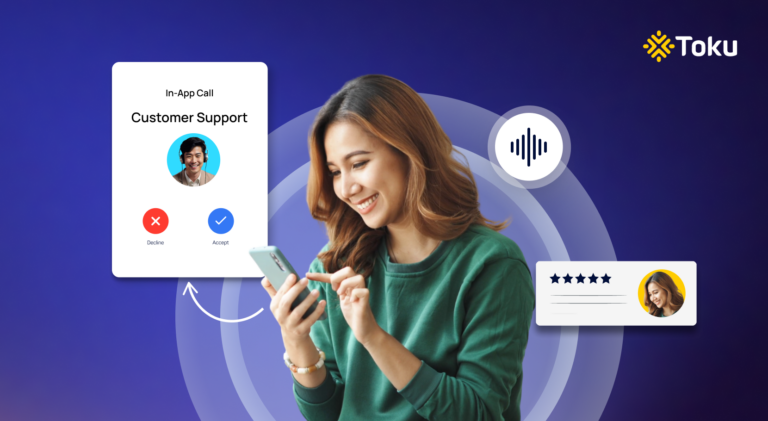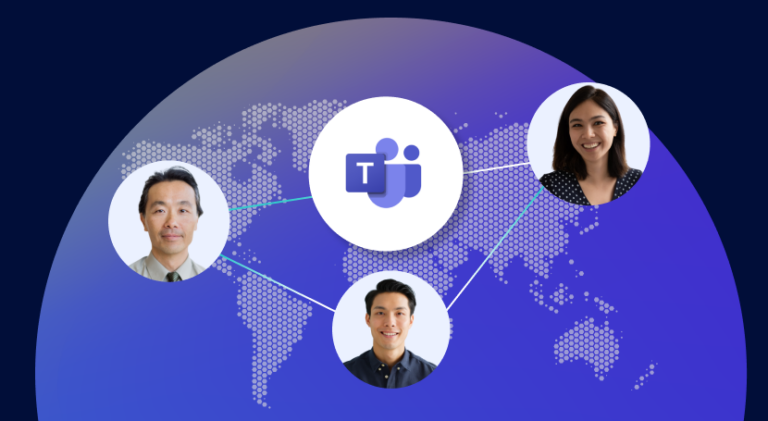In an age where digital communication is everywhere, there’s still something special about a human voice in customer service. Consider this: recent findings reveal that over half of consumers in Singapore still prefer human interactions for customer service, with 21% specifically choosing to speak with someone on the phone. This statistic not only highlights the […]
It’s no secret. Communication has become the new battlefield in business as nearly every enterprise pivots to improving their operational efficiency and customer experience digitally.
Increasingly, we see businesses in every industry embracing different CPaaS tools to simplify the sending of messages and embedding application to person, voice calling, and other new communication channels like advanced messaging, and video into websites and applications.
Because of the simplicity and flexibility of communication APIs, we are seeing new use cases for CPaaS in countless verticals every day.
The insurance sector is no different. There are numerous moving parts of the insurance machine that can be made more efficient and streamlined with programmable communications APIs, with the claims process being just the tip of the iceberg.
Improving insurance with technology
The insurance industry is rapidly transforming with different new technologies having a seismic impact on all aspects of operations. Traditional insurance businesses are using tech to bring new value-added services to customers and improving the way insurance services are delivered to consumers. On top of the tech-transformation, the insurance industry is also now seeing a new breed of insurtech entrants carving out new niches such as insurance marketplaces, neoinsurance providers, and insurtech enablers.
With neoinsurance providers, we have companies like Lemonade that are using technology to underwrite and sell insurance in a distinctly digital-mobile-first way. They tend to have super slick, optimized mobile experiences, with emphasis on making the insurance process as easy as possible. Lemonade for example pays about a third of its claims in just a few seconds.
Then we have the insurance marketplaces such as Waterdrop in China and Policybazaar in India that make it easy for consumers to better identify and evaluate their insurance options for different categories such as vehicle-, life-, property-, and medical- insurance. Finally, the insurtech enablers are businesses that help other companies in the insurance industry digitise or modernise specific parts of the insurance value chain.
Now that we have a better idea of the insurance industry’s status quo, let’s look at some of the most common use cases of CPaaS in insurance that we think are transforming the industry’s operations every day.
CPaaS reduces late or missed appointments with insurance agents
For any industry that relies on in-person appointments to secure new sales and provide consultation services, Programmable SMS tools that enable SMS appointment reminders, notifications, and even voice call notifications have been a game-changer.
This is especially the case in the insurance industry where most policy purchases and renewals, and advisory services require setting up an appointment with the customer. It’s thus important that agents make the best use of their available time by ensuring late or missed appointments are kept to a minimum.
Programmable SMS APIs come into their own here. They are a great way to leverage a customer’s preferred communication method (research shows that SMS open rates are as high as 98%, compared to just 20% for emails). With CPaaS, insurers can send clients a friendly reminder or two – or more – via SMS automatically to reduce the chance of no-shows. Remember, it’s all programmable with SMS APIs, so a business can easily change the frequency and timing of the SMS notification depending on their needs.
And because it’s automated, it frees up time and resources on the insurer’s side as their agents no longer need to obsessively keep track of appointment dates and manually remind clients of upcoming meetings.
IVR can create operational efficiency and enhance caller experience
IVR (Interactive Voice Response) is a commonly implemented self-service functionality under the CPaaS umbrella. In the insurance industry, there are plenty of simpler, repetitive types of queries and transactions that can be easily offloaded to a self-serviced system, which can help the insurer cut costs, increase efficiency in their contact centre and allow agents to handle more of the complex types of customer queries.
For instance, customers can check their claim status with an IVR that conveniently allows them call in and listen to claim status updates, payout amounts, payout dates, and other details.
Want to help your customer with an auto-insurance claim find the most conveniently located body shop? It’s easy with an IVR that can list all the body shops within a vicinity.
Need to speed up your claims process? It’s easier if you use an IVR to automatically route a customer call to the right agent for processing their particular type of claim. This way, an insurer ensures the customer gets routed to the right place as soon as possible in the interaction, which cuts down on waiting time and call time. Moreover, the end user is able to process their claim faster, and get on with their day.
These are just a few ways that IVR implementations can add value to the customer experience whilst helping the insurer improve their operational efficiency.

Get monthly nuggets of wisdom for all things customer experience in your inbox
Building seamless in-app customer experiences
Remember the emphasis on slick, intuitive in-app experiences with insurtechs like Lemonade?
Well, all that slick goodness would not be possible without Programmable Voice APIs. For instance, if a customer needs to file a rental insurance claim, but wants to talk immediately to customer support to clarify a doubt they might have, would a mobile-first insurtech leave it to them to exit their app, and call their hotline with a different calling app?
That would be decidedly unintuitive and disruptive to the customer experience which ideally should remain in-app. In this scenario, many insurtechs would opt for a Programmable Voice API that embeds in-app calling within the app to ensure the customer stays in the app as far as possible even while making a call to their customer support. Receiving the call within the app also improves call pick-up rates and provides peace of mind to users because they know it is the company calling them (and not a complete stranger).
Gone are the days when you’d have to stop whatever you’re doing, Google the insurer’s hotline and make a phone call. A seamless in-app customer experience is perceived as a basic requirement these days.
Effortless insurance renewal with CPaaS
It’s easier to sell to an existing customer as opposed to a brand-new prospect.
This presents a critical opportunity to insurers at the point of policy renewal. The more frictionless the renewal process is, the more likely the customer will renew their policy.
In the case of motor insurance for example where an assessment of the vehicle is necessary before policy renewal, an insurer can leverage CPaaS to help the assessor inspect the vehicle in real time via a video call, or through recorded video and images. Again, the video calling, recording and photo taking function can be embedded within the insurer’s proprietary app, so that it’s effortless for the customer to submit the images and video for evaluation. There’s no need for the customer to drive down to the insurer’s office for the assessment.
And, because the assessor is able to direct the customer to point the camera exactly where they want to check, the live video calling ability reduces the chance of miscommunication (it’s sometimes difficult for the customer to know exactly what parts of the car need to be checked without guidance from the assessor).
Making more convenient insurance claims with video APIs
Many insurers today provide their own proprietary apps for clients to use in the event of an insurance claim.
CPaaS now makes it easy to embed new convenient features within the insurance apps that make it easier for insurers and the customers to process a claim.
Picture this. A claimant involved in a car accident uses the insurer’s mobile app to make a video call (which uses an in-app video calling API) with the insurance agent, so that the latter is able to assess the damage live.
Embedding this live video-calling capability within the app allows the insurer and claimant to bypass what used to be a really tedious process of manual documentation by the claimant that happened post-accident. This is because the insurance agent is able to get a good grasp of the entire accident details immediately through the video call, which shortens the entire claims process significantly. On top of this, the video call boosts convenience and productivity for the insurer because it eliminates the need for an agent to visit the accident scene to assess the damages.
Besides video-calling, video APIs also allow insurers to embed picture and video capturing in the app. Because this feature uses geolocation tagging, it’s yet another convenient way for the insurer to establish the claimant actually was physically present at the accident’s location – which is key to building trust in the insurer-claimant relationship.
Reinventing insurers for greater peace of mind
We’ve highlighted just a few use cases where CPaaS is breathing new life into the centuries-old insurance industry. By cleverly embedding novel tools to communicate richer information and details as part of their service delivery, and internal operations, both new and established insurance businesses are transforming themselves to meet the demands of the modern customer.
Wherever enhanced, automated communications can play a role in making operations efficient or add convenience to customers for greater peace of mind, we’re confident that CPaaS will continue to be key in the transformation of insurance.
 V K Sanjeed
V K Sanjeed 

 Nora Huin
Nora Huin 

 Ana Castrillon
Ana Castrillon